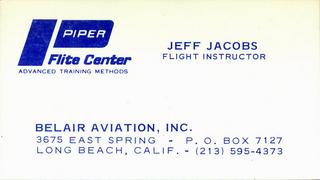AggieMike88
Touchdown! Greaser!
- Joined
- Jan 13, 2010
- Messages
- 20,805
- Location
- Denton, TX
- Display Name
Display name:
The original "I don't know it all" of aviation.
Cherokee 235 would do it. No speed demon, but 130 KTAS (150 mph) is easily doable. There are at least two of them (N9050W and N8503W) in the film. The Cherokee Six would do it, too.And 600miles in 4hrs in exactly what Cherokee of that vintage?
58 Willy !??
Guess the phonetic alphabet hadn’t been invented yet.
And 600miles in 4hrs in exactly what Cherokee of that vintage?
No doubt he did mean statute miles. All of the manufacturers expressed performance in statute miles until 1976-77. Before that hardly anybody in light piston GA spoke nautical other than in the context of IFR.If he means statute miles, a Cherokee 180 with a tailwind could probably manage it
The manufacturers were reluctant to make the switch from statute to nautical. After all, a cruising speed of 160 mph looked a lot better in the brochure than did 139 knots.
The manufacturer-members of GAMA finally agreed to switch to knots as primary. Airspeed indicators on Cessna airplanes switched to knots on the outer scale, and mph on the smaller, inner scale, in 1976. Piper, Beech and Mooney switched in 1977.
I periodically feel the same way. The manners, customs, culture, and more of the late 50's and early 60's in many ways are better than what we experience today.This just proves that I was born in the wrong generation
Looking at it through 2019 eyes.
Yea, I used to have to wear a ****ing tie to work every day even though I spent a good part of the day under the hood of a car working on running engines (setting idle speed, idle mixture, ignition timing, etc.).It was also interesting to see how well dressed we were 50 years ago.
Airplanes are the same. https://registry.faa.gov/aircraftinquiry/NNum_Results.aspx?omni=Home-N-Number&nNumberTxt=9050wThe manners, customs, culture, and more of the late 50's and early 60's in many ways are better than what we experience today.
Back then if you were flying IFR you were flying the needles. You were navigating using pilotage, wasn't much else. Lots of guys got lost, lots blundered into weather. I like things way better now. We're in the golden age of general aviation.

Clumsily phrased. If you were VFR you were flying pilotage, wasn't anything else. Look at old crash reports, in lots of them folks get lost, run out of gas and die.IFR via pilotage??? Ooooooooooooooooooooookaaaaay.

Clumsily phrased. If you were VFR you were flying pilotage, wasn't anything else. Look at old crash reports, in lots of them folks get lost, run out of gas and die.
Phonetic alphabet changed in 1956....W became Whiskey.58 Willy !??
Guess the phonetic alphabet hadn’t been invented yet.
?
58 Willy !??
Guess the phonetic alphabet hadn’t been invented yet.
And 600miles in 4hrs in exactly what Cherokee of that vintage?
._. was shorthand for received.Phonetic alphabet changed in 1956....W became Whiskey.
R changed from Roger to Romeo....I’ve always assumed Roger was shorthand for Received before then.
58 Willy !??
Yes; these are "the good old days."I like things way better now. We're in the golden age of general aviation.
The manufacturers were reluctant to make the switch from statute to nautical. After all, a cruising speed of 160 mph looked a lot better in the brochure than did 139 knots.
The manufacturer-members of GAMA finally agreed to switch to knots as primary. Airspeed indicators on Cessna airplanes switched to knots on the outer scale, and mph on the smaller, inner scale, in 1976. Piper, Beech and Mooney switched in 1977.
Not that it makes much difference in a Cherokee ... which is part of what made it a mediocre trainer.Couldn't help but note there was no mention about use of the rudder when "turning the airplane to the left" or right.
Same with my 2007 Sport Cub.I found it amusing the airspeed indicator in my 1996 Aviat Husky is in MPH, as are all the speeds in the POH. I think they maybe got a bit carried away in their desire to emulate the Supercub.
I had to wear a tie while flight instructing. I wasn't comfortable about it either, so I only wore clip-on ties. My business card, 1971-72:Yea, I used to have to wear a ****ing tie to work every day even though I spent a good part of the day under the hood of a car working on running engines (setting idle speed, idle mixture, ignition timing, etc.).

That could get you an interview with the TSA these days.My first lesson was in 1957, and paid cash from my hard earned $60 a month as a draftee in the Army.
